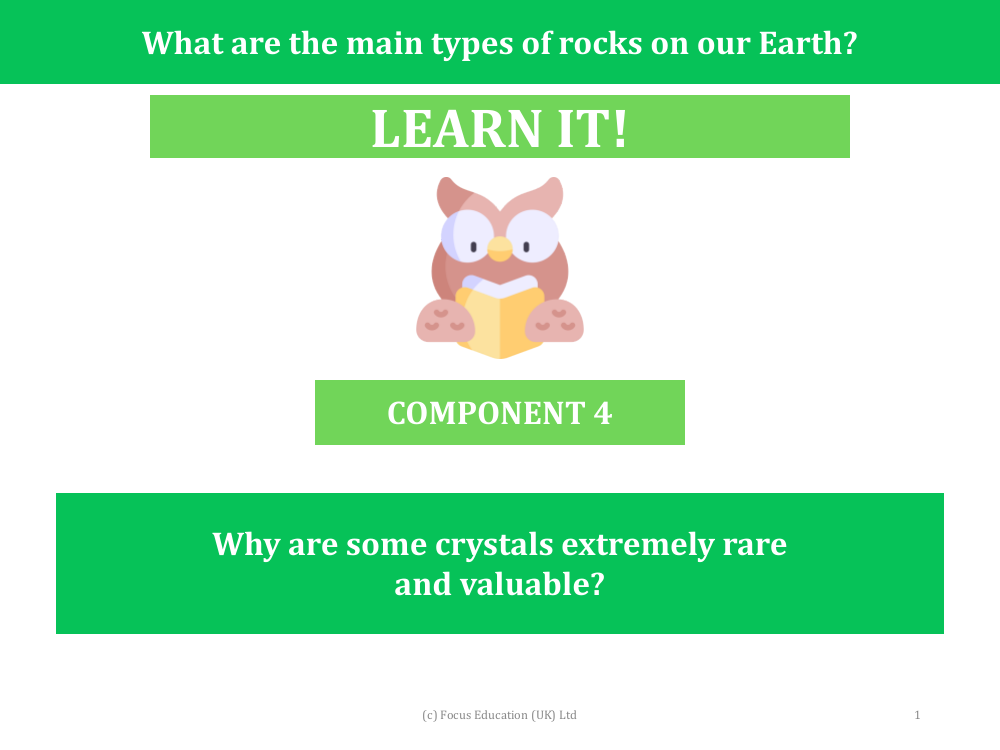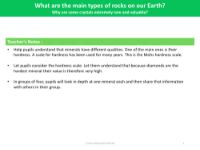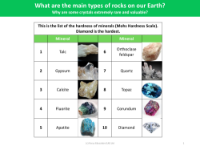Why are some crystals extremely rare and valuable? - Presentation

Science Resource Description
The rarity and value of crystals can be attributed to several factors, including their hardness, which is a key quality of minerals. The Mohs hardness scale, a long-standing measure of mineral hardness, indicates that diamonds, being the hardest mineral with a score of 10, are highly valuable. During a lesson, pupils are encouraged to explore different minerals, such as calcite, quartz, topaz, and gypsum, and understand their properties and place on the hardness scale. For example, talc is the softest with a score of 1, while other minerals like quartz and topaz have higher hardness ratings of 7 and 8, respectively. This scale is crucial in determining the various uses and values of minerals.
Beyond their aesthetic appeal in jewellery, diamonds serve many practical applications due to their unparalleled strength. Industries ranging from mining to car manufacturing utilise diamond-tipped tools for their superior cutting and drilling capabilities. In the realm of audio technology, diamonds are used in speaker domes and record needles to produce high-quality sound, capitalising on their ability to vibrate rapidly without degrading sound fidelity. The lesson aims to give pupils a comprehensive understanding of why some crystals are considered more rare and valuable than others, and how their unique properties extend their use beyond mere ornamentation.



